The topic of Xiaomi vs. Samsung continues to be a hot topic. Although the Samsung S26 series has not yet been released, users who follow Android phones can't wait to compare the Xiaomi 17 and Samsung S25. If you are also very interested in this, you may want to check out today's sharing content. We will do a detailed analysis and comparison of the Xiaomi 17 and Samsung S25, so that everyone can better choose their favorite phone.
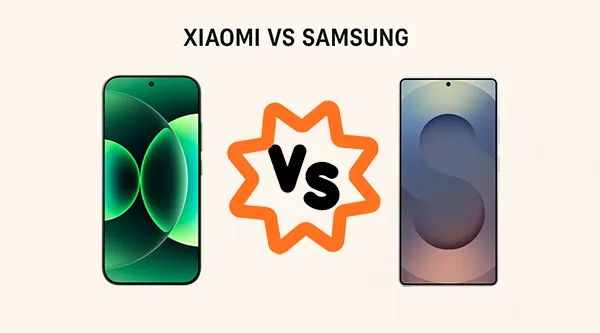
- Part 1: Xiaomi 17 vs Samsung S25: Key Differences
- Part 2: Mi 17 vs Galaxy S25: Specifications
- Part 3: Xiaomi 17 vs Samsung S25: Display
- Part 4: Xiami 17 vs Galaxy S25: Software
- Part 5: Mi 17 vs Galaxy S25: Camera
- Part 6: Xiaomi 17 vs Samsung S25: Battery
- Part 7: Xiaomi 17 vs Samsung Galaxy S25: Price
- Part 8: Xiaomi 17 vs Samsung S25: Pros and Cons
- Part 9: Quickly Transfer Data to Xiaomi 17 or Samsung S25
Part 1: Xiaomi 17 vs Samsung S25: Key Differences
The primary differences between the Xiaomi 17 and the Samsung Galaxy S25 often come down to battery, charging speed, and software experience.
The Xiaomi 17 line, even the base model, is designed to be a battery champion, sporting a massive 7000 mAh cell and blazing-fast 100W wired charging. It emphasizes raw hardware power and a feature-rich, if less traditional, take on Android with HyperOS 3. The S25 Ultra has a 5000 mAh battery, and wired charging is slower, typically 45W (wired) and 15W (wireless).
The Xiaomi 17 runs on a newer version of Android with HyperOS. Software support timelines are often shorter compared to Samsung. The Samsung Galaxy S25, on the other hand, focuses on a refined, globally-consistent user experience with One UI and its suite of AI features, Galaxy AI. Its build quality, display technology (often having slightly superior panels), and broader global availability often give it an edge in the premium perception, though its charging speeds and battery capacity are typically more conservative than Xiaomi's.
Additionally, because Samsung Galaxy S26 hasn't been rolled out, the chip of the Galaxy S25 uses the Snapdragon 8 Elite for Galaxy processor. While powerful, it is the predecessor or a slightly less powerful variant compared to Xiaomi's chip. By the way, the Xiaomi 17 Ultra model hasn't been released yet. Maybe it will have an upgrade on the chipset. If you want to buy the most powerful flagship product of Xiaomi or Samsung, wait for the coming 2026.
Tips: Then what about Xiaomi 17 vs iPhone 17? If you are also interested in it, don't miss the comparison.
Part 2: Mi 17 vs Galaxy S25: Specifications
That's an excellent step up in comparison - pitting the top-tier flagships against each other. The Xiaomi 17 Pro Max and the Samsung Galaxy S25 Ultra represent the absolute peak of mobile technology, with key differences appearing in battery, charging speed, and software commitment.
Here's the comparison of the standard Xiaomi 17 and Samsung Galaxy S25 models:
| Feature | Xiaomi 17 (Standard) | Samsung Galaxy S25 (Standard) |
|---|---|---|
| Display | ~6.3-inch AMOLED, 120Hz, Dolby Vision, 3500 nits (peak), 2656x1220 px | 6.2-inch Dynamic AMOLED 2X, 120Hz, HDR, 2600 nits (peak), 2340x1080 px |
| Processor | Snapdragon 8 Elite Gen 5 (3 nm) | Snapdragon 8 Elite (for Galaxy) (3 nm) |
| RAM/Storage | 12/16GB RAM, UFS 4.1 storage, starting at 256GB | 12GB RAM, UFS 4.0 storage, starting at 128GB |
| Battery Capacity | 7,000 mAh (Si-Carbon) | 4,000 mAh (Li-Ion) |
| Wired Charging | 100W Fast Charging | 25W Fast Charging |
| Wireless Charging | 50W Wireless Charging | 15W Wireless Charging |
| Rear Camera Setup | 50MP Wide + 50MP Ultrawide + 50MP Telephoto (2.6x Optical Zoom) | 50MP Wide + 12MP Ultrawide + 10MP Telephoto (3x Optical Zoom) |
| Front Camera | 50 MP | 12 MP |
| Operating System | Android 16 (HyperOS) | Android 15 (One UI) |
| Software Support | Standard Android/HyperOS commitment | Up to 7 years of OS and security updates |
| Durability/Build | IP68 water/dust resistance (expected) | IP68, Armor Aluminum frame, Gorilla Glass Victus 2 |
Besides, The Xiaomi 17 Pro Max is the clear winner here with an enormous 7,500 mAh battery, a massive increase over the S25 Ultra's 5,000 mAh. This is paired with dramatically faster 100W wired and 50W wireless charging, compared to Samsung's 45W wired and 15W wireless. As for the camera, the S25 Ultra has a 200MP main sensor, while the Xiaomi 17 Pro Max uses a 50MP sensor. Go ahead to get accurate information.
Part 3: Xiaomi 17 vs Samsung S25: Display
Both manufacturers utilize cutting-edge AMOLED technology, but Xiaomi aims for sheer brightness, while Samsung focuses on color accuracy and market-leading consistency.
Xiaomi 17: Features a 6.3-inch LTPO AMOLED display with an extremely high peak brightness of 3500 nits. This makes it incredibly easy to view even under direct sunlight, while the LTPO technology allows for a variable refresh rate up to 120 Hz, optimizing battery life.
Samsung Galaxy S25: Uses Samsung's signature Dynamic AMOLED 2X panel. While its peak brightness might be slightly lower than the Xiaomi 17's exceptional rating, Samsung screens are renowned for their flawless color calibration, superior anti-reflection coatings, and generally set the gold standard for mobile display quality.
Here's a detailed comparison of the display specifications:
| Feature | Xiaomi 17 / 17 Pro | Xiaomi 17 Pro Max | Samsung Galaxy S25 (Base) | Samsung Galaxy S25 Ultra |
|---|---|---|---|---|
| Technology | AMOLED, LTPO | LTPO AMOLED | Dynamic AMOLED 2X, LTPO (likely) | Dynamic LTPO AMOLED 2X |
| Main Display Size | 6.3 inches | 6.9 inches | 6.2 inches | 6.9 inches |
| Main Display Resolution | 2656*1220 pixels | 2608*1200 pixels | 2340*1080 pixels | 3120*1440 pixels |
| Pixel Density (approx.) | 464 PPI | 416 PPI | 416 PPI | 498 PPI |
| Refresh Rate | 120 Hz (Adaptive/LTPO) | 120 Hz (Adaptive/LTPO) | 120 Hz | 120 Hz (Adaptive/LTPO) |
| Peak Brightness | Up to 3500 nits | Up to 3500 nits | Up to 2600 nits | Up to 2600 nits |
| Protection | Dragon Crystal Glass | Dragon Crystal Glass 3 / Shield Glass 3.0 | Corning Gorilla Glass Victus 2 | Corning Gorilla Armor 2 |
| Special Feature | N/A | Secondary Rear Display (2.9-inch OLED) | N/A | N/A |
Choose the Xiaomi 17 if you prioritize:
- Maximum battery life and ultra-fast charging.
- The newest flagship processor for peak performance.
- Higher-resolution cameras across the board.
Choose the Samsung Galaxy S25 if you prioritize:
- Long-term software support and a highly refined user experience (One UI).
- Guaranteed durability with features like the Armor Aluminum frame.
- A slightly more compact design (6.2-inch vs 6.3-inch).
Part 4: Xiami 17 vs Galaxy S25: Software
The software experience is perhaps the most significant divergence between these two flagships.
| Aspect | Xiaomi 17 / HyperOS 3 | Samsung S25 / One UI |
|---|---|---|
| AI/Smart Features | Strong in-device AI tools (HyperAI): style/tone writing, smart search, circle-to-act (similar to circle-to-search), content awareness, dynamic wallpapers, HyperIsland live activity hub. | Also very strong: multimodal AI agents, Gemini integration, actionable on-screen AI, Now Bar / Now Brief, tools like Call Transcripts, Writing Assist, Drawing Assist. More mature in some cross-app integrations. |
| UI & Interaction | HyperIsland, redesigned UI, animations polished, cinematic lock screens; heavy visual polish. | Refined UI too; updated camera UI & controls, lock screen integrations; also improving animations & fluidity. |
| Cross-device Ecosystem | Xiaomi improving cross-device (phones/tablets, Mac, possibly iOS), sharing, etc. | Samsung has broad ecosystem (watches, tablets, PCs), established Knox security; deep integration in Samsung ecosystem. |
| Security & Privacy | On-device AI, better app permission controls, locating devices even powered off, etc. But support window (major Android versions) shorter than Samsung. | Strong security stack (Knox, post-quantum cryptography for future threats), longer update support. Samsung seems more conservative/robust in privacy promises. |
| Update/Support | ~5 years security updates for flagship; ~4 major Android version upgrades in many cases. | 7 years OS/security updates for S25, including One UI 8; better long-term support overall. |
| Performance & Polishing | Promised improvements in animation fluidity, speed, responsiveness; likely very good on the 17 series hardware. | High performance, but some reports of features being beta-quality at release; Samsung tends to patch / refine over time. |
Part 5: Mi 17 vs Galaxy S25: Camera
While specific sensor details are crucial, the core differences often lie in processing and features.
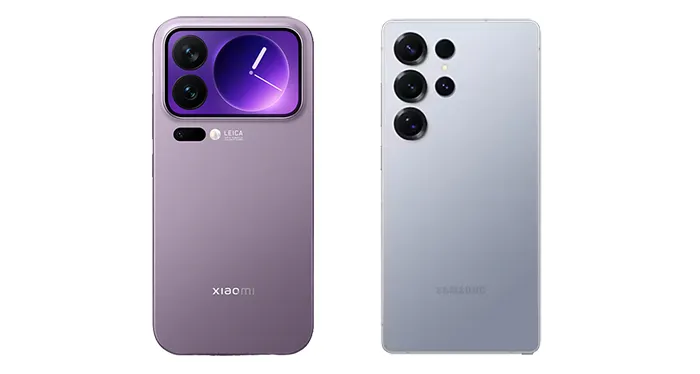
| Feature | Xiaomi 17 / 17 Pro | Xiaomi 17 Pro Max | Samsung Galaxy S25 (Base) | Samsung Galaxy S25 Ultra |
|---|---|---|---|---|
| Main Camera | 50 MP (Wide) | 50 MP (Wide, 1/1.28" sensor) | 50 MP (Wide) | 200 MP (Wide, 1/1.3" sensor) |
| Ultra-Wide | 50 MP | 50 MP | 12 MP | 50 MP |
| Telephoto/Zoom | Triple 50 MP setup, Telephoto (3x optical zoom, on Xiaomi 17 Pro) | Triple 50 MP setup, Periscope Telephoto (5x optical zoom, larger 1/2.0" sensor) | 10 MP (3x optical zoom) | Quad Camera setup with Dual Telephoto Lenses: 10 MP (3x optical zoom) + 50 MP (5x periscope telephoto zoom) |
| Front Camera | ~32 MP | 50 MP | 12 MP | 12 MP |
| Special Feature/Tech | Leica collaboration (color science, lenses) | Leica collaboration; Larger sensors; Secondary Rear Display for selfies | Balanced, refined camera processing | High-resolution main sensor; Dual Telephoto setup for versatility; Excellent video/Night mode processing |
Choose Xiaomi 17 Pro Max if you prioritize raw power across all lenses, want a very high-resolution selfie camera, enjoy the Leica aesthetic/color science, and value excellent low-light performance from the zoom lens.
Choose Samsung Galaxy S25 Ultra if you prioritize ultimate versatility with the dual telephoto system, prefer industry-leading video recording, appreciate a more neutral and consistent image processing style, and value the power of the 200 MP main sensor.
Part 6: Xiaomi 17 vs Samsung S25: Battery
This is where the Xiaomi 17 pulls ahead with a clear hardware advantage.
| Feature | Xiaomi 17 (Base) | Xiaomi 17 Pro Max | Samsung Galaxy S25 (Base) | Samsung Galaxy S25 Ultra |
|---|---|---|---|---|
| Battery Capacity | ~7,000 mAh (Si-Carbon) | ~7,500 mAh (Si-Carbon) | ~4,000 mAh | 5,000 mAh |
| Wired Charging | ~100 W (Fast Charging) | ~100 W (PD3.0, QC3+) | 25 W (Fast Charging) | 45 W (Fast Charging, 65% in 30 min) |
| Wireless Charging | ~50 W (Fast Wireless Charging) | ~50 W (Fast Wireless Charging) | 15 W (Wireless Charging) | 15 W (Wireless Charging, Qi2 Ready) |
| Reverse Wireless | Supported | 22.5 W Reverse Wireless | Supported | 4.5 W Reverse Wireless |
| Philosophy | Maximize capacity and charging speed. | Maximize capacity and charging speed. | Prioritize battery longevity and consistent software optimization. | Prioritize battery longevity and consistent software optimization. |
Part 7: Xiaomi 17 vs Samsung Galaxy S25: Price
The primary difference in the price comparison between the Xiaomi 17 series and the Samsung Galaxy S25 series is the value proposition, with Xiaomi generally offering a lower starting price for comparable or superior hardware specifications.
Samsung commands a premium price due to its global brand recognition, software ecosystem, and long-term software support commitment, while Xiaomi tends to undercut on price to gain market share with highly competitive specs.
Here is a comparison of the price points based on available global and regional starting prices:
| Model | Reported Starting Price (USD Equivalent) | Key Comparison Points |
|---|---|---|
| Xiaomi 17 (Base) | ~$800 - $859 (12GB/256GB/512GB) | Often includes more RAM/Storage than the base S25 at a similar or slightly lower price point. |
| Samsung Galaxy S25 (Base) | ~$799 - $899 (12GB/128GB) | Starts slightly lower than Xiaomi but often with less base storage. |
| Xiaomi 17 Pro Max | ~$842 - $982 (for 12GB/512GB to 16GB/1TB) | Significantly undercuts the premium flagship S25 Ultra while offering a larger battery, faster charging, and a newer chipset. |
| Samsung Galaxy S25 Ultra | ~$1,299 - $1,660 (for 12GB/256GB to 12GB/1TB) | The highest-priced model, with the premium reflecting its S-Pen, durability, and established global ecosystem. |
Simply put, if the final cost is the primary concern and maximum hardware specifications (especially battery and charging) for the lowest price are desired, the Xiaomi 17 series offers the clear advantage. If a globally established ecosystem, long-term software updates, and features like the S-Pen are prioritized, the Samsung S25 series justifies its higher price.
Note on Pricing: Xiaomi's price points are often converted from Chinese Yuan (CNY) and may increase for global markets due to taxes and import costs. Samsung's prices are generally MSRP for US/EU markets.
Part 8: Xiaomi 17 vs Samsung S25: Pros and Cons
Pros and cons of Xiaomi 17:
| Pros | Cons |
|---|---|
| Superior Value & Aggressive Pricing Offers comparable or better flagship specifications (like a newer chipset, more base RAM/storage) at a significantly lower price point. |
Shorter/Less Consistent Software Support Historically, Xiaomi provides shorter or less consistent OS and security updates compared to Samsung's 4 OS + 5 years of security commitment. |
| Massive Batteries & Ultra-Fast Charging Models like the 17 Pro Max (up to 7,500mAh) and 17 (up to 7,000mAh) offer substantially larger batteries and much faster charging (e.g., 100W wired). |
Questionable Global Availability/Optimisation Flagship models often see limited official global distribution and service support compared to Samsung's widespread presence. |
| Leading Raw Performance Often launches with a newer-generation top-tier chipset and advanced cooling for superior peak performance and better sustained gaming. |
Durability & Build Materials While flagships are premium, Samsung generally has a stronger reputation for overall device ruggedness, higher IP ratings, and utilizing cutting-edge protection. |
| Advanced Front Camera/Display Features Features like a high-resolution 50MP front camera and innovative elements (e.g., a secondary 'Magic Back Screen' on the Pro Max) offer unique functionality. |
Software Experience (HyperOS vs. One UI) HyperOS (formerly MIUI) can sometimes be perceived as less polished, less consistent, or too reminiscent of iOS, and may contain bloatware/ads. |
Pros and cons of Samsung Galaxy S25:
| Pros | Cons |
|---|---|
| Industry-Leading Software Support Samsung guarantees a superior software experience, typically offering 4 generations of Android OS updates and 5 years of security patches. |
Slower Charging Speeds Charging is significantly slower than Xiaomi's HyperCharge (e.g., 45W max wired charging on the Ultra, 25W on the base S25). |
| Ecosystem & Productivity Features Features like the built-in S-Pen (Ultra) and the Samsung DeX desktop experience provide unparalleled productivity and ecosystem integration. |
Higher Price Tag The flagship models, especially the Ultra, command a higher price point than the similarly-specced Xiaomi counterparts. |
| Refined Camera Experience Excels at consistent image processing, exceptional video recording quality, and user-friendly camera software that delivers reliable results across all modes. |
Smaller Battery Capacities Battery capacities are noticeably smaller (e.g., S25 base at ~4,000mAh), which can translate to less screen-on time for heavy users compared to the Xiaomi 17 series. |
| Superior Durability & Brand Reliability Features superior build materials like titanium frames and IP68 water/dust resistance across the entire lineup, backed by a strong global reputation. |
Previous Generation Chipset The S25 series may utilize a slightly older-generation top-tier chipset (e.g., Snapdragon 8 Elite) compared to the newer chip often found in the simultaneously-released Xiaomi 17 series. |
Part 9: Quickly Transfer Data to Xiaomi 17 or Samsung S25
Whether you decide to buy Xiaomi 17 or Samsung Galaxy S25, the next step is transferring your old data to your new flagship. To make your data migration smooth, you can use a practical tool, iReaShare Phone Transfer, widely compatible with most mobile devices, including Xiaomi 17/15/14/13/12/11/10, Samsung S25/S24/S23/S22/S21/S20/S10, iPhone 17 series, iPhone 16/15/14/13/12/11/X/8/7, iPad, Motorola, Google, ZTE, TECNO, Honor, and more.
Here's the main features of this tool:
* Transfer data from one phone to another with one stop.
* Support the data transfer of Android to Android, iOS to iOS, Android to iOS, and iOS to Android.
* Help you copy your contacts, SMS, photos, videos, music, notes, calendars. books, etc.
* Support most data types between Android devices.
* Compatible with Android 6.0 or later, and iOS 5.0 or higher, including Android 16 and iOS 26.
* The transferred data will not overwrite your current data on your destination device.
* No ads and easy to use.
Download iReaShare Phone Transfer.
Download for Win Download for Mac
To transfer your data from an old phone to a Xiaomi 17 or Galaxy S25 with ease:
-
Install and run the program on your computer after downloading it, and connect both your devices to the computer with USB cables.
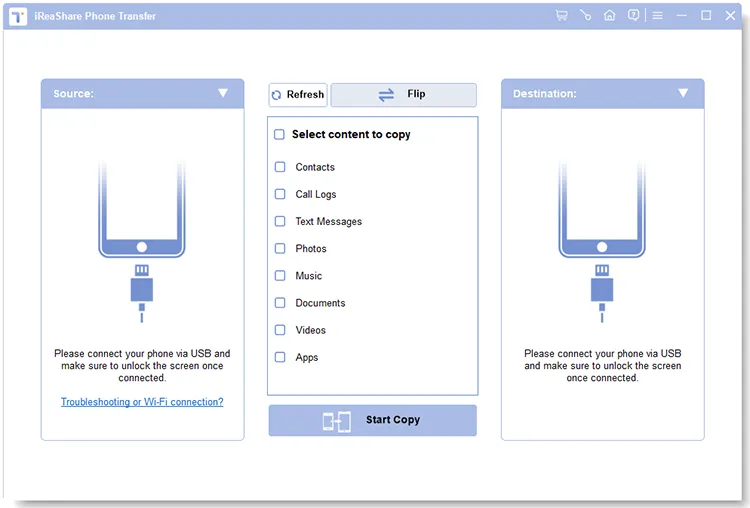
-
Enable USB debugging on Android, and tap "Trust" on iOS. Then the connection will be established. Check if your new phone is on the "Destination" side. If not, click "Flip". Then select data types.
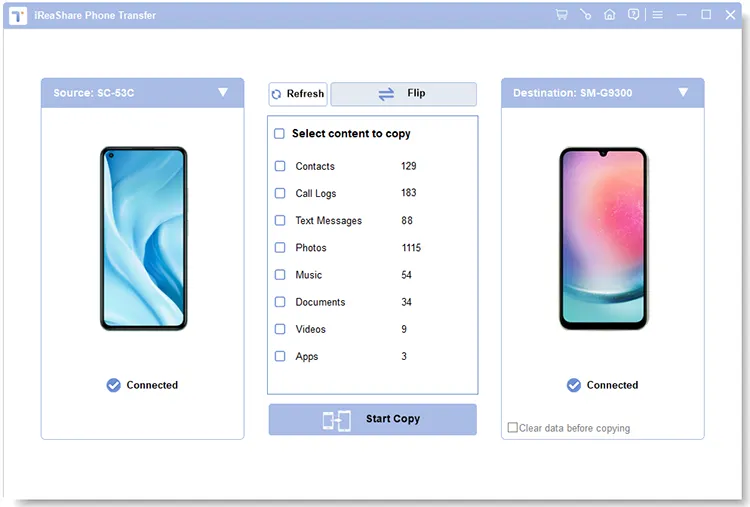
-
Finally, tap "Start Copy" to initiate the process. Once done, you can directly access the data on your new smartphone.
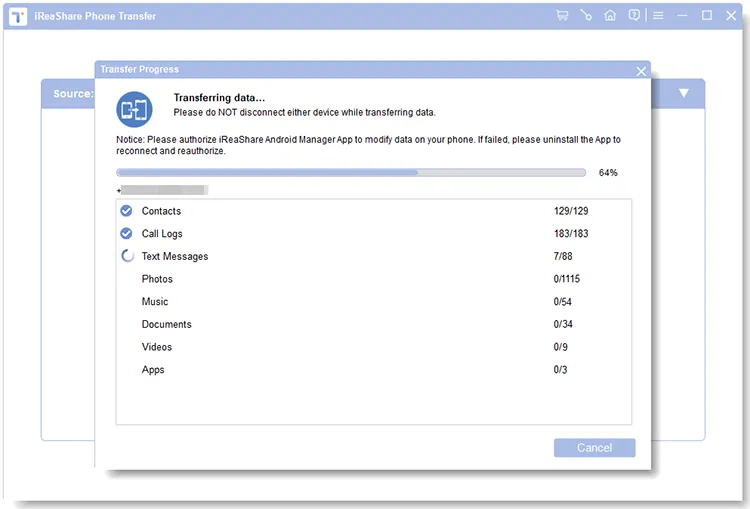
Watch the video guide if needed:
Conclusion
The choice between the Xiaomi 17 and the Samsung Galaxy S25 comes down to your top priorities. Choose the Xiaomi 17 if you are a power user who demands the absolute best in battery life and charging speed, prioritizes high RAM and storage, and enjoys a customizable software experience.
Choose the Samsung Galaxy S25 if you value a globally supported device with a refined, consistent user experience, market-leading AI features, best-in-class software support, and a universally reliable camera system.
We believe that you will have made your decision after reading this guide. Wish you a seamless data transfer by using iReaShare Phone Transfer, and never lose any important data.
Download for Win Download for Mac
Related Articles
Samsung S25 Edge vs iPhone 17 Air: 7 Rounds (Latest Comparison)
Google Pixel 10 vs iPhone 17: Which Is More Suitable for You?
iPhone 16 vs iPhone 17: A Comprehensive Comparison of 16 and 17 Series
How to Delete Everything on Your Phone Samsung (5 Solutions)





























































